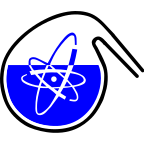Speakers
Description
INTRODUCTION
The lack of trained nuclear chemical specialists has been identified in all branches of nuclear industry and other areas where skills in NRC are required, such as radiopharmacy, nuclear medicine, radiation protection and radioecology, and many others. Retraining general chemistry graduates is one of the options for mitigating this problem. Hands-on Training in Nuclear Chemistry (HOT in NRC) aims at efficient delivering the basics of nuclear and radiochemistry to trainees with chemical background at Master level, who need to extend their skills and knowledge to the field of nuclear and radiochemistry. The course was developed by Department of Nuclear Chemistry, CTU in Prague in collaboration with CINCH consortium during the CINCH I and CINCH II projects (www.cinch-project.eu).
EXPERIMENTAL
The course consisted of 40 hours covering the fundamentals of nuclear chemistry followed by 40 hours of practical laboratory exercises. The course was designed flexible to cover needs of end-users with reasonable schedule and relevant materials available. Prior to attending the course, the participants had to pass distant-learning courses at CINCH Moodle related to a) general radiation protection and b) radiation protection rules and restrictions of the laboratory controlled area.
Participants had to successfully finish theoretical and radiation protection parts before entering the on-site course as well as an interview on the priniciples and procedures of each of the tasks before starting the practical/laboratory work.
RESULTS
Based on the experience and feedback obtained during the pilot and second run of the course, all the course materials were updated and finalized. All the lectures delivered during the theoretical part of the course were recorded, post-produced using the SlidesLive™ technology. All the e-learning materials and the course are available at CINCH Moodle, additional study materials at NucWik. The contents of the theoretical part includes:
Structure and properties of atomic nuclei. Classification of radionuclides. Kinetics of radioactive decay. Radioactive equilibria. Binuclear reactions. Yield of nuclear reactions. Natural radioactivity. Radioactive decay chains. Nuclear fission, fission products. Hot atoms chemistry. Szilard-Chalmers system. Radiation chemistry. Actinides and transactinides.Interaction of IR with matter (α, β, γ, neutrons). Detection of ionizing radiation (detector types, principles). Dosimetry of ionizing radiation.
The practical exercises included have been:
1. Handling of radioactive materials - work behind shielding and in glove box.
2. Preparation of solutions with required activity.
3. Contamination survey, decontamination, wipe smear samples.
4. Radionuclide generator preparation and milking. Radioactive equilibria.
5. Sample activation via neutron irradiation.
6. Decay curve measurement and deconvolution, half-life determination.
7. Gamma-ray spectrometry – calibration, efficiency, measurement.
8. Liquid-liquid extraction of uranium. Uranium specific activity, estimation of its isotopic abundance.
9. Liquid scintillation counting.
The next run of the Hands-on Training in Nuclear Chemistry is planned in June 2018 under MEET-CINCH project and will take place at Department of Nuclear Chemistry, CTU in Prague.
ACKNOWLEDGEMENT
1. CINCH-II: “Cooperation in education and training In Nuclear Chemistry” has been supported by the European Atomic Energy Community's 7th FP (EURATOM FP7 2007-2011), grant No. 605173
2. MEET-CINCH: “A Modular European Education and Training Concept In Nuclear and radioChemistry” supported by HORIZON 2020 Framework Programme for Research and Innovation, grant No. 754972.

